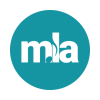Session summary
Josh Henry began the session with a presentation on ergonomics and how accessibility and usability grew out of that field. Metadata producers are at risk for repetitive stress injuries. Some tips for reducing repetitive motion are to change your posture throughout the day, take breaks, avoid clutter under your desk and in your office, don’t let light reflect off your monitor, and avoid reaching—have the things you use most close at hand. The right kind of chair can help support your back and allow your forearms and wrists to be in a horizontal and neutral position. Your monitor and keyboard placement should allow your shoulders to be relaxed and your arms to be neither cramped nor reaching. In response to questions, Josh mentioned that standing desks can be beneficial but aren’t necessarily better than sitting desks, and that using a regular keyboard and mouse with laptops is better ergonomically.
Ann Churukian talked about using a speech recognition software called Dragon NaturallySpeaking version 13 (produced by Nuance), which works better in some applications than others. Its basic functionality includes opening and closing applications and tabs, navigating, clicking, focusing the cursor anywhere on a page, inputting words and numbers, pressing keyboard keys or combinations, and editing and manipulating text. It works well with OCLC Connexion Client and the new RDA Toolkit, allows you to spell words with letters or NATO phonetic alphabet, and has an extensive customizable vocabulary. It doesn’t work well in Google applications except Gmail, most non-English words must be spelled, talking out loud all day can be annoying for co-workers and hard on your vocal cords, and it freezes and crashes more often than other software. Ann did a demonstration in OCLC Connexion client. It was pretty amazing to watch!
Ann also read a statement from Tracey Snyder. Tracey has customized her Dragon to be able to use Gary Strawn’s Music Toolkit, OCLC keymaps, and special voice command shortcuts. She finds that speaking an English word that looks like a non-English word and then editing it, makes foreign words faster to input.
Ann said learning to use Dragon doesn’t really take long, but she keeps learning new things about it. Using it remotely is difficult.
Kurt Hanselman and Kristi Bergland spoke about designing documentation and tools with the end user in mind. Kyle discussed universal design, which is an approach that addresses the needs of all potential users, and emphasized the need to include metadata producers in the category of users, especially those using assistive technologies. He discussed accessibility for OCLC, Connexion Browser, MarcEdit, and Integrated Library Systems, specifically Alma. Kristi spoke about accessible design of documentation, which encompasses accessibility in alternative text, contrast, headings, links, lists, and tables. Accessible documentation increases not only accessibility, but also equity, diversity, inclusion, recruitment, and retention. A good first step is to make a document template or style sheet outlining the specifics, and then hold a “Documentation hackathon” in which people refine documents and then meet to discuss the end result.
Kathy Glennan discussed the new RDA Toolkit in view of accessibility. One of the main goals with the RDA Restructure & Redesign project was to bring it into compliance with current accessibility standards. They worked with a site designer, arranged for a consulting firm to evaluate the ‘stable’ site in April 2019, and remediated the issues. Currently, the one outstanding issue is with foreign-language text elements, and finding ways to assist screen readers with reading examples.
Michelle Hahn, whose presentation was on screen readers, gave her presentation using her own JAWS screen reader. She pre-recorded demos of screen readers using Blacklight, Innovative, ExLibris, and WorldCat, with a separate demonstration about punctuation, which is extremely important to screen readers. She encouraged us to watch those demonstrations, which are linked from the session slides. JAWS can be set to voice different amounts of punctuation. Michelle demonstrated how the JAWS reader voiced the following cataloging fields, both with and without punctuation: title and responsibility area, publication, series, cast and contents. The screen reader pauses when it encounters certain types of punctuation; when there is no punctuation—and therefore no pauses–the meaning of the words is lost.
The question was asked whether the new policy to allow removal of ISBD punctuation would affect screen readers, and Michelle said it is a huge equity problem that will probably create an internal digital divide in the library world, based on who has money to pay for systems to be programmed. She mentioned that an article will be coming out in American Libraries magazine about this issue.
